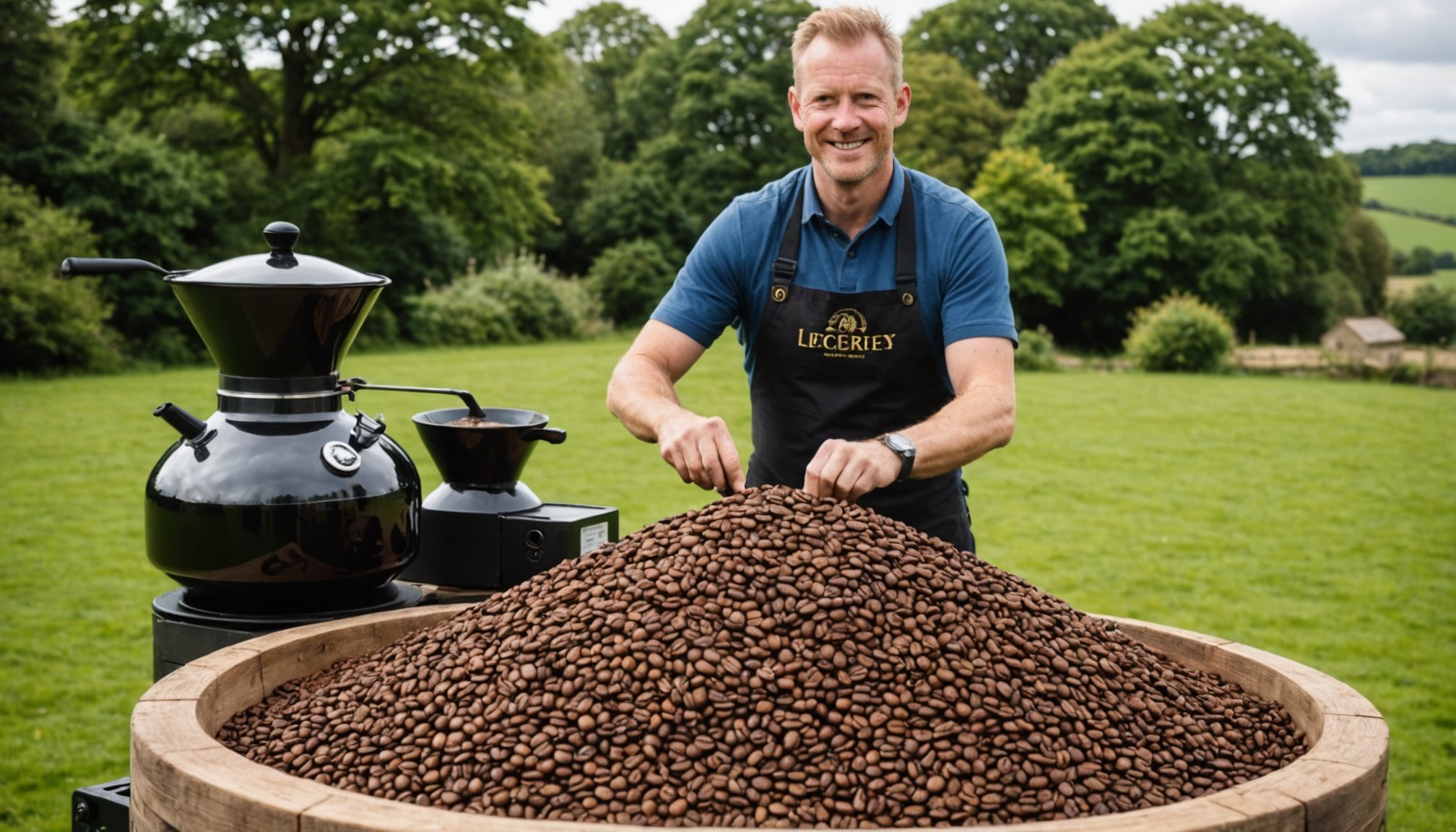Understanding the Rural Coffee Market
Diving into the rural coffee market reveals fascinating trends and dynamics. Unlike urban environments, these markets often encapsulate distinct target demographics shaped by local customs and traditions. Understanding the market research findings can distinguish popular preferences, such as enjoying coffee as part of a social ritual rather than just a brew. This insight can point businesses towards emphasizing ambiance and community within their cafes.
When delving deeper into target demographics, it’s crucial to recognise age-related and socio-economic factors driving coffee consumption. For instance, younger populations might crave expansive coffee menus and innovative flavors, while older demographics may prefer traditional and familiar choices. This insight aids in tailoring marketing efforts to appeal to specific consumer tastes.
Have you seen this : Unlocking Peak Energy Performance: UK Home Battery Storage Solutions for Optimal Renewable Efficiency
Competing in a rural setting involves identifying both direct rivals, like neighbouring coffee shops, and indirect ones, such as online marketplaces and general stores offering coffee. Successful market entry can be achieved by conducting thorough competition analyses to identify gaps, allowing businesses to strategically position themselves as unique rural market solutions. By addressing neglected needs or offering enhanced customer experiences, cafes can effectively carve a niche in these unique locales.
Developing a Business Plan
Crafting a robust business plan is vital for the success of a rural coffee shop. This plan should encompass key elements such as financial planning and an effective operational strategy. A thorough financial planning process includes setting a realistic budget, forecasting potential revenues, and determining funding sources, which are essential for sustaining operations. By identifying any financial gaps, businesses can strategically seek investments or loans.
Have you seen this : Unlocking Peak Energy Performance: UK Home Battery Storage Solutions for Optimal Renewable Efficiency
The operational strategy must focus on the daily management of the coffee shop. This includes staffing, supply management, and customer service policies. It’s important to develop routines and protocols that streamline processes and enhance customer experience. Efficient staff training ensures consistency in service and helps in building a reliable team that customers can trust.
Incorporating local resources, like community events or partnerships with local vendors, can also be a part of this strategy, providing a unique twist that enriches the cafe’s local flavour. Additionally, a flexible business plan allows adaptations to unforeseen market changes, ensuring the coffee shop remains competitive. By prioritising these components, rural cafes can build a strong foundation for success and growth.
Unique Selling Propositions for Rural Cafes
Creating a unique selling proposition in the rural coffee market is key to standing out. For cafes, leveraging unique offerings can help cultivate a distinctive brand identity that resonates with the local audience. This might involve developing a brand aesthetics and narrative that reflect the community’s culture and values, making customers feel a sense of belonging.
Emphasizing locally sourced ingredients not only supports local agriculture but also enhances product appeal. Customers today value transparency and sustainability, making eco-friendly practices a significant pull factor. Highlighting sustainable practices in cafe operations, such as using biodegradable packaging or reducing waste, can convey a commitment to environmental stewardship and bolster customer loyalty.
Building a brand rooted in community focus ensures sustained patronage. This could involve engaging with local events, fostering partnerships with other local businesses, or hosting community gatherings within the cafe space. Such efforts reinforce a cafe’s role as a communal hub, creating an inviting atmosphere where neighbours can gather and connect.
In a competitive market, these strategies help distinguish rural cafes by fostering deeper connections with both the land and its people, ultimately contributing to long-term success.
Sourcing Quality Coffee and Supplies
In the realm of the rural coffee market, ensuring high-quality coffee begins with strategic coffee sourcing. Selecting premium beans has a direct impact on flavour and customer satisfaction. This necessitates building relationships with reliable suppliers. Establishing long-term partnerships can ensure a consistent supply of quality beans, helping to mitigate risks associated with supply disruptions.
Quality assurance is paramount in maintaining standards. This involves setting up rigorous quality control measures that assess the quality of coffee beans before purchase. Factors such as bean origin, roasting profiles, and brewing methods contribute significantly to overall quality. Conducting tastings and continuous quality checks can help sustain high product standards.
Furthermore, exploring diverse suppliers can introduce unique coffee flavours and profiles into the mix, enhancing the cafe’s offerings. It’s beneficial to engage in knowledge exchange with suppliers, learning about the latest in bean production and processing techniques.
By prioritising thorough sourcing practices and robust quality controls within the rural context, cafes can effectively cater to discerning local palettes while ensuring a steady, premium product offering to their customers. This builds brand trust and encourages repeat patronage.
Marketing Strategies for Rural Communities
Rural markets pose unique challenges but also offer distinctive opportunities for crafting effective marketing strategies. Understanding how to engage with these communities can significantly enhance a cafe’s visibility and patronage.
Tapping into community engagement is pivotal. Hosting local events or participating in community gatherings fosters personal connections, making the café an integral part of the local fabric. This engagement can be customised to reflect local interests and traditions, nurturing a loyal customer base. Additionally, leveraging social media allows cafes to reach wider audiences and promote their offerings dynamically. Platforms like Facebook and Instagram can showcase invites to events, new menu items, or simply share the daily vibe of the café.
An often overlooked aspect is the power of local advertising. Whether through local newspapers, flyers, or community boards, targeting local customers where they already are ensures messages are more likely to resonate and be remembered.
Combining these marketing strategies effectively can lead to an increase in foot traffic and a stronger community presence. By fostering genuine relationships and maintaining a strong local focus, rural cafes can thrive in their niche markets.
Case Studies of Successful Rural Cafes
Exploring case studies of successful rural cafes reveals insightful success stories that can guide new entrants in the market. These stories showcase how cafes have leveraged local connections and innovative strategies to thrive.
One standout success story is a cafe that prioritised adaptability in its approach. By staying attuned to community needs, they tailored offerings to include seasonal flavours and held local events, creating a strong community bond. Their story highlights how flexibility can meet evolving consumer demands, reinforcing local loyalty.
Learning from common challenges faced, including supply chain disruptions and fluctuating demand, successful cafe owners have developed best practices. These include maintaining a resilient supply chain through diversified suppliers and encouraging customer feedback to hone service offerings.
To emulate these successful strategies, rural cafes can focus on:
- Customising the customer experience to fit local tastes.
- Cultivating a solid community presence with frequent local events.
- Monitoring feedback to inform continuous improvement.
Avoiding potential pitfalls, such as neglecting community engagement, ensures sustained success. By analysing these case studies, aspiring rural café owners can adopt practices that align best with their unique market conditions.
Community Engagement and Sustainable Practices
For rural cafes, fostering community involvement is paramount to thriving in local markets. Building strong relationships with locals can transform a cafe into a beloved communal hub. Simple steps like hosting community events or supporting local causes bolster a cafe’s connection to its patrons, reinforcing it as a cherished local institution.
Furthermore, adopting sustainability and eco-friendly initiatives aligns with increasing consumer interest in environmentally conscious practices. Implementing measures such as reducing waste, using biodegradable packaging, and adopting energy-efficient methods can significantly impact both ecological well-being and customer satisfaction. Consumers are more likely to frequent cafes that mirror their values, making sustainability a competitive edge.
Collaboration with local businesses and farmers is mutually beneficial. Sourcing ingredients locally not only supports the local economy but also enhances the freshness and quality of offerings. Spotlighting these partnerships provides transparency and enriches the café’s narrative, resonating with customers who value community-focused efforts.
By prioritising community engagement and sustainability, rural cafes can distinguish themselves in a competitive market, creating enduring bonds with their locales while contributing to environmental and economic sustainability.





